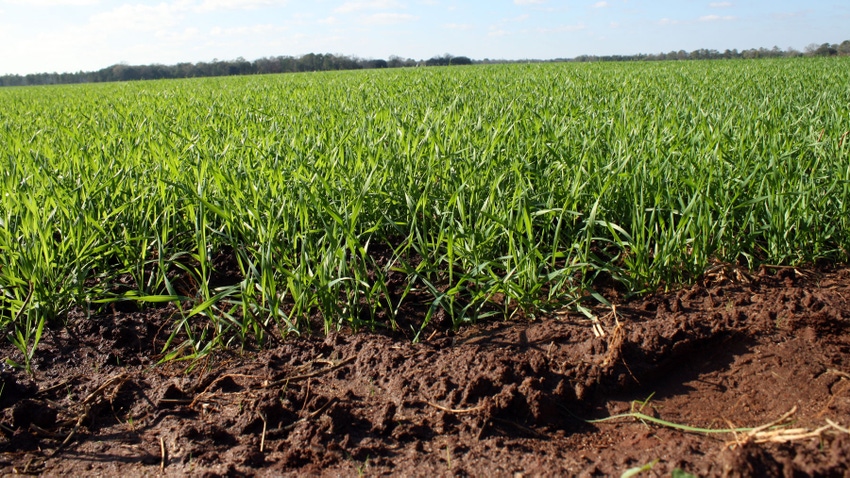
At a Glance
- Take advantage of Natural Resource Conservation Service conservation programs.
- They have reduced their cover crop seeding rates and have switched to planting their cover crops with a planter.
Clay Lowe and Zeb Winslow encourage farmers to use a “take it slow” approach when it comes to adapting a cover crop program on your farm.
Lowe of Wakefield, Va., and Winslow of Scotland Neck, N.C. have been longtime users of cover crops and have learned through trial and error over the years. In a session at the North Carolina Small Agricultural Consultants 2023 Fall Conference in Raleigh Dec. 7, the two farmers provided guidance for planting and managing cover crops. Among the highlights:
Experiment with new ideas on corn and soybean crops. Cotton is too costly of a crop to try new things on first.
Play around with small acreage at first rather than the entire farm.
Use comparison plots to conduct your own research and development (R&D).
Manage tall cover crops by rolling them to the ground. This makes planting easier.
Take advantage of Natural Resource Conservation Service conservation programs.
Make planting of cover crops a priority. Get them seeded as soon as possible after a field is harvested. Then let it grow until you are ready to plant.
“Start small,” Winslow advises. “Be your own R and D department. I learned a lot more from my failures than I have from my successes. Start something. Try it and see where it takes you. Don’t be afraid to fail but do it small. Don’t ever let anyone push you farther than you’re comfortable pushing yourself.”
Comfort zone
Lowe says it is important for farmers to stay in their comfort zone when it comes to cover crops and remember what they can control and what they can’t control. He said it is critical to remember that your cash crop is your number one priority.
“Basically, we can control what, how, and where we plant cover crops. We control how much we plant. We can control when we plant them, when we terminate them, and how we terminate them. Having a plan and knowing what you want to do before you start is critical,” Lowe said.
Both Lowe and Winslow use rye and hairy vetch in their cover crop program. The vetch fixes nitrogen that helps meet the fertility needs of the following crop, protects soil from erosion, helps improve soil tilth, and provides weed control benefits.
Lowe shared his experiences of planting a rye and vetch mixing going into his corn crop, an idea he adapted from his fellow Virginia famer and mentor Paul Davis, who farms in New Kent County, Virginia Davis farms north of the James River in Virginia while Lowe farms south of the James River.
Payments
This past crop year, Lowe terminated his rye with clethodim on March 15, which allowed him to receive Virginia Soil and Water Conservation District incentive payments for the cover crop. He applied eight ounces of clethodim to the acre with gallons of 30% nitrogen and six gallons of water. This killed the rye but not the vetch.
“By getting rid of that rye, the vetch explodes. And it takes over and becomes the dominant crop in the field. It starts to bloom. Once it blooms, that’s what we wait for at planting. Because at bloom, that’s the maximum nitrogen contribution that the vetch will give you,” Lowe said.
“Allow the legumes to fixate nitrogen through bloom only, then terminate with a broad-spectrum herbicide. Ensure vetch plants are either green or crispy brown, never yellow. Terminating at bloom maximizes nitrogen contribution and ensures no seed is set to become possible future weeds,” Lowe advised.
Winslow and his father Zeb Winslow, Jr., planted their first multi-species in cover crop in 2014 through an inventive program by the National Resources Conservation Service. Over those 10 years, Winslow said they have gone from being biomass cover crop farmers to farmers who use cover crops as a tool.
They have reduced their cover crop seeding rates and have switched to planting their cover crops with a planter instead of a drill. Lowering the seeding rate turned out to be a big plus in reducing costs.
“We greatly reduced the cost of what we are putting in the ground and at then at the same time, we are seeing benefits from it as far as establishing our cash crop,” Winslow said.
Read more about:
Farm ManagementAbout the Author(s)
You May Also Like






